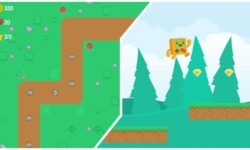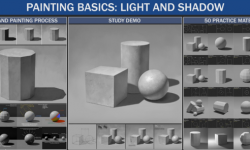The Beginner’s Guide to Animation in Unity (v5 to v2018+)
Release date:2018, December
Duration:11 h 13 m
Author:Penny de Byl
Skill level:Intermediate
Language:English
Exercise files:Yes
What Will I Learn?
create animations from scratch using the Unity Mecanim system and place them onto game objects.
import third party animated assets into Unity and setup animation controllers.
write C# code to dynamically control animations through user interaction.
explore the use of inverse kinematics in humanoid rigs.
create complex animation sequences and blends dynamically controlled by the user at runtime.
Requirements
Download the free version of the Unity Game Engine.
You do not need to be able to model or animate in an external package – all resources are provided.
Description
The Beginner’s Guide to Animation in Unity with Mecanim is for animators and Unity practitioners who want to bring their characters to life in a game environment and want to learn the ins and outs of the mecanim system. You don’t need to be able to model or animate in external packages as all models and animations are provided. All aspects of animation in Unity are covered from physics, key framing, curves, forward and inverse kinematics, animation state machines and working with third party assets. Students will be introduced to elementary code, in C#, that is essential for making dynamic animations and triggers to control character behaviour at run time.
In this course, Penny teaches all the invaluable skills you will require to begin animating your own game characters in Unity using her internationally acclaimed teaching style and knowledge from over 25 years working with games and computer graphics.
Updated to cover Unity Versions 5 to 2018+ the course now contains 5 hours of extra content with:
new challenges and projects,
blending animations to create strafe sets,
adjusting curves,
designing a character and the placing of motion capture with free third-party tools.
Learn how to animate and work with:
the mecanim timeline,
curve and keyframe editors,
animation events that trigger code,
root motion,
imported animations created in third party packages, and
animation state machines.
Contents and Overview
The course begins with the very basics of the Unity interface and progresses to an in-depth examination of all the mecanim components including the Animation, Animator, DopeSheet and Curve windows.The majority of lectures are follow-along, hands-on workshops in which the student will explore a variety of animation techniques from creating a simple bouncing ball through to a complex animation for a wall climbing character. Animated models and starter projects are included for students who are not confident in creating their own. By the end of this course, the student will have thoroughly explored the functionality of the mecanim system, under the instruction of an internationally recognised professor, and be well on their way to developing snippets of code to control all aspects of 3d game animation.
Who is the target audience?
This course is for those interested in a thorough understanding of the Unity Mecanim system. It is suitable for beginner game developers and animators as well as well seasoned animators wanting to import their work into games.
This course is not for those wanting to learn to program in Unity.





 Channel
Channel






Bro can we get more of her courses
Do you really need “Mathematics for Computer Games Development using Unity” or “The Beginner’s Guide to Artificial Intelligence in Unity”??
Yeah man.
But still I guess she had more courses
sorry, we don’t have those
No problem my friend, just remember you guys are the best. Cheers
please upload the below udemy updated course
Complete C# Unity Game Developer 2D
https://www.udemy.com/course/unitycourse/